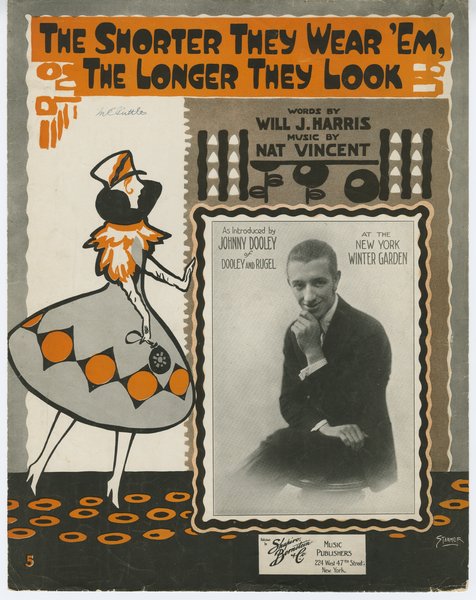War Poster- 1917

This source is a wartime poster from 1917 of a young woman worker, holding up an artillery shell and an airplane. The poster is from WWI and is advertising the Young Woman’s Christian Association, similar to the better-known Young Men’s Christian Association (YMCA.) The poster reads “For Every Fighter a Woman Worker. United War Work Campaign. Care for her through the YWCA.” The woman is wearing overalls and a collared shirt with the sleeves rolled up. She’s wearing practical lace-up shoes, high socks, and a hat. This poster was used to encourage women to join the war effort. The symbolism of the woman holding up the airplane and the shell mean that she is supporting the men at war, by working at home. Her outfit is an extreme departure from the Edwardian fashions of the period before. Gone the restrictive corsets and hobble skirts, replaced by menswear-inspired practical work clothes. This style was thought to be very scandalous and reflects how the war inspired a total breakdown of certain societal norms. This fashion, though disliked by traditionalists, was accepted as necessary to allow women to contribute to the war effort.
Town & Country Article- 1918

This source is an article from Town and Country Magazine in 1918. It’s a column called “Mille-Chic on Fashions.” The article details encounter with several stylish women and explains what they were wearing. Mrs. Bob Cassation of Philadelphia was seen in a simple Georgette, gathered at the waist, while Ms. Dallas Pratt was seen in a strait-lined silhouette with wide sleeves and embroidery at the wide cuffs. Next, the article talks about the current state of affairs, writing “The government commandeering of all woolen necessitates using small quantities of these materials, and added to this the increased cost of labor makes simple dressing a foregone conclusion,” as the author’s prediction for the next season of designs. The author predicts non-voluminous, long skirts and sleek fabric with trim as a stylistic element. These simple designs are a reaction to the war, in which fabric regulations made elaborate costumes impractical. The author also writes that couturiers will be designing such costumes for women with busy lives. This article marks a shift from Edwardian fashion to more practical wartime fashions, which were simpler and more practical. In addition to being practical, these designs were also liberating for women, as they allowed them to move around outside the home.
Composition Cover- 1917

This source is the cover page for a composition called “The Shorter They Wear “Em, the Longer They Look.” It was written in 1917 by Johnny Dooley and the lyrics are in reference to women’s skirts getting shorter, and men not being able to stop looking. The lyrics are a man talking to his doctor about having trouble with his eyes because he is seeing “too much” of women. He talks about how men cannot peel their eyes off women. This source comes at a time when women’s skirts were rising in reaction war fabric rationing (Ewing 1997, 83) This is an interesting insight into how men of the time perceived new fashion trends as scandalous. It also shows how women were still very much percieved as sexual objects, despite new fashions being about liberation.
